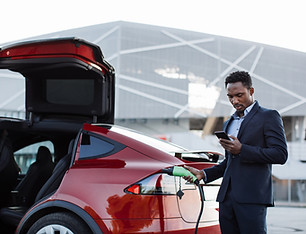
ACT NOW:
TRANSPORTATION
How we get around & move our stuff adds about 41% to our regional greenhouse gas emissions. Cars are convenient but any vehicle that uses gasoline or diesel adds a lot of pollution to the air we breathe. But "zero emission transportation" isn't just electric vehicles! It includes all of the ways we get around, including our feet, bicycles, and public transit (trains, ferries, buses). We're all making changes as we rethink how we get around. You decide what works best for you.
If we get this right, we'll put a dent in our transportation emissions, and make a difference now & for future generations.
Actions you can take right now
.png)
Make changes to how you get around
Most car trips are relatively local, and small changes can add up. There are many options to using cars - and that will help reduce traffic congestion, too.
Try this:
-
If your destination is close, consider walking or biking.
-
If you need a bit more "oomph", use an e-bike for commuting or running errands instead of a gas car. You'll spare the air & get healthier, too.
-
If you use ride sharing apps, request an EV next time.
-
If you can take public transit and carpool more, that's great. The Bay Area has multiple ways to get around. Besides BART, CalTrain, and the SMART train, there are ferries and 19 bus systems in the Bay Area. Learn more about your transit options at Traveler Services and 511.org.
-
If you're traveling, learn what the projected emissions will be from your trip, and if you're getting on a plane, check out these preflight tips before you check in for your next flight.

Commit to making your next wheels electric
Whether new or used, purchased or leased, now is the time to explore the many choices and commit to making your next purchase an EV. Then learn more below about the makes and models, cost and rebates, charging - everything you need to make an informed decision.
Try this:
-
Pledge to make your next vehicle (purchase or lease, new or used) an electric vehicle (or hybrid).
-
Check out Ride & Drive Clean's guides & checklists.
- Find electric car incentives in your zip code.
-
Calculate how much you would save with an EV.

Take the next step
.png)
Ask your employer to offer commute incentives
Transportation is the Bay Area's greatest source of greenhouse gas emissions and commuting for work creates traffic congestion and often gridlock.
Many employers offer incentives if you drive less, including pre-tax benefits, transit subsidies, shuttles & van pools, carpooling, and telework. Employers can help reduce vehicle trips by offering commuter options to employees, which may improve morale and reduce turnover. The Bay Area Air Quality Management District (BAAQMD) requires employers with 50 or more employees to offer commuter benefits.
Try this:
-
Enroll your company in the Spare the Air Employer Program.

Get inspired to do more
.png)
Electrify your ride & dump the pump
Ride & Drive Clean is the trusted resource in the Bay Area for everything you need to know about driving electric: cars, trucks, and e-bikes. New, used, or leased, two wheels or four, they've done the hard work so you don't have to.
Try this:
-
Find EV incentives in your zip code (from PlugStar).
-
Calculate how much an EV can save you (from PG&E).


Electric vehicles 101
Is an EV right for me?
There are EVs to fit every budget and lifestyle: from 2-seaters to SUVs, from mini-vans to trucks - new, used, and leased. Today, there are more alternatives to gas cars than ever. Virtually every auto manufacturer has committed to making EVs across all of their lines, and there are over 70 models available right now, in every price point.
Are EVs affordable?
Putting gas in a car can cost 2-5 times more than the equivalent cost of the electricity to charge an EV. With very few moving parts, EVs are much cheaper to maintain - 40% less expensive! No belts to replace, spark plugs to change, or oil to top up. The Federal, State, and dealer incentives and rebates make them even less expensive than the sticker on the window.
How do I charge my EV?
Learn more about charging at home, charging at multifamily homes & condos, and charging at work. Contact your local community choice energy agency about their EV programs: MCE Clean Energy, Sonoma Clean Power, East Bay Community Energy, Clean Power SF, Peninsula Clean Energy, Silicon Valley Clean Energy, or San Jose Clean Energy.






